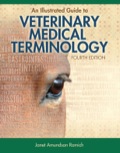
EBK AN ILLUSTRATED GUIDE TO VETERINARY
4th Edition
ISBN: 9781133709459
Author: ROMICH
Publisher: YUZU
expand_more
expand_more
format_list_bulleted
Concept explainers
Question
error_outline
This textbook solution is under construction.
Knowledge Booster
Learn more about
Need a deep-dive on the concept behind this application? Look no further. Learn more about this topic, health-nutrition and related others by exploring similar questions and additional content below.Similar questions
- Match each of the following terms with the correct meaning. ________ Ventral Lying on the back, face upwards Farther from the point of attachment The front of the body or body part Toward the tail end of the spinearrow_forwardGabby is a surgical technologist who often scrubs in orthopedic procedures. She recently found out she is 10 weeks pregnant and is thrilled because she has been trying for some time. She has informed her supervisor, but finds herself scheduled to do a total hip replacement procedure with a surgeon who uses bone cement and fluoroscopy to check the prosthesis placement. Is Gabby or her fetus at risk by scrubbing in on this type of procedure?arrow_forwardIf the child showed a cleft lip through ultrasound analysis and the parents then started blaming each other (because Sue is a smoker and Tim was born with the defect), how would you counsel them? Sue and Tim were referred for genetic counseling after they inquired about the risk of having a child with a cleft lip. Tim was born with a mild cleft lip that was surgically repaired. He expressed concern that his future children could be at risk for a more severe form of clefting. Sue was in her 12th week of pregnancy, and both were anxious about the pregnancy because Sue had had a difficult time conceiving. The couple stated that they would not consider terminating the pregnancy for any reason but wanted to be prepared for the possibility of having a child with a birth defect. The genetic counselor took a three-generation family history from both Sue and Tim and found that Tim was the only person to have had a cleft lip. Sues family history showed no cases of cleft lip. Tim and Sue had several misconceptions about clefting, and the genetic counselor spent time explaining how cleft lips occur and some of the known causes of this birth defect. The following list summarizes the counselors discussion with the couple. Fathers, as well as mothers, can pass on genes that cause clefting. Some clefts are caused by environmental factors, meaning that the condition didnt come from the father or the mother. One child in 33 is born with some sort of birth defect. One in 700 is born with a cleft-related birth defect. Most clefts occur in boys; however, a girl can be born with a cleft. If a person (male or female) is born with a cleft, the chances of that person having a child with a cleft, given no other obvious factor, is 7 in 100. Some clefts are related to identifiable syndromes. Of those, some are autosomal dominant. A person with an autosomal dominant gene has a 50% probability of passing the gene to an offspring. Many clefts run in families even when there does not seem to be any identifiable syndrome present. Clefting seems to be related to ethnicity, occurring most often among Asians, Latinos, and Native Americans (1 : 500); next most often among persons of European ethnicity (1 : 700); and least often among persons of African origin (1 : 1,000). A cleft condition develops during the fourth to the eighth week of pregnancy. After that critical period, nothing the mother does can cause a cleft. Sometimes a cleft develops even before the mother is aware that she is pregnant. Women who smoke are twice as likely to give birth to a child with a cleft. Women who ingest large quantities of vitamin A or low quantities of folic acid are more likely to have children with a cleft. In about 70% of cases, the fetal face is clearly visible using ultrasound. Facial disorders have been detected at the 15th gestational week of pregnancy. Ultrasound can be precise and reliable in diagnosing fetal craniofacial conditions.arrow_forward
arrow_back_ios
arrow_forward_ios
Recommended textbooks for you
- Lifetime Physical Fitness & WellnessHealth & NutritionISBN:9781337677509Author:HOEGERPublisher:Cengage



Lifetime Physical Fitness & Wellness
Health & Nutrition
ISBN:9781337677509
Author:HOEGER
Publisher:Cengage



How to solve genetics probability problems; Author: Shomu's Biology;https://www.youtube.com/watch?v=R0yjfb1ooUs;License: Standard YouTube License, CC-BY
Beyond Mendelian Genetics: Complex Patterns of Inheritance; Author: Professor Dave Explains;https://www.youtube.com/watch?v=-EmvmBuK-B8;License: Standard YouTube License, CC-BY